Sukumo, wood ash lye, shell ash, and wheat gluten are natural ingredients used as raw materials. Over about two weeks from preparation, the fermentation is promoted while gradually increasing the dye vat’s concentration. At Watanabe’s, this is called “Sukumo Ai-date” — a traditional Japanese fermentation technique.
Inside the dye vat, a microbial world unfolds much like observing a complex ecosystem of stars: societies form, villages exist, and life activities take place. This living process is what brings the rich, deep blue color to our indigo.
All Year Round – Indigo Fermentation and Dyeing (Aidate)
The alkaline "lye" is extracted from wood ash, and “shell ash” provides minerals in an alkaline form, while wheat gluten serves as a sugar source. The dye liquid is created through fermentation using these ingredients.
 "Indigo Fermentation (with Wheat Gluten)" "Indigo Fermentation (with Wheat Gluten)" |
 "Reduction Fermentation" "Reduction Fermentation" |
Alkalinity (pH) is adjusted as needed with “lye” and “shell ash,” promoting fermentation over about two weeks while increasing dye concentration. The fermentation progress varies with the season and weather, so careful observation and monitoring of the fermentation state are essential.
 "Nakaishi (Layering material in dye vat)" "Nakaishi (Layering material in dye vat)" |
 "Kasage (Raising or increasing the liquid level in the dye vat.)" "Kasage (Raising or increasing the liquid level in the dye vat.)" |
 "Indigo Flower (Natural fermentation foam)" "Indigo Flower (Natural fermentation foam)" |
 "Liquid Surface" "Liquid Surface" |
Indigo dyeing relies on a chemical reaction called oxidation and reduction. In the dye liquid, the indigo pigment is reduced by the action of fermentation bacteria, transforming into a water-soluble yellow substance. When exposed to air, it oxidizes, returning to its original insoluble indigo pigment.
 "Oxidation and Reduction" "Oxidation and Reduction" |
When immersing the fabric in the dye liquid, care is taken to avoid introducing air. In the vat, the fabric is quickly spread out to ensure the dye liquid reaches every part evenly.
Oxidation begins as soon as the fabric is lifted from the dye liquid. It is quickly wrung out and spread thoroughly to promote oxidation. This process is repeated to gradually deepen the color. The final shade depends on the condition of the fermentation bacteria in each vat.
 "Wringing" "Wringing" |
 "Oxidation" "Oxidation" |
 "Washing with water" "Washing with water"
|
After dyeing, the indigo pigment that didn’t bind to the fibers, along with impurities, is removed through repeated rinsing, washing, and sun-drying.
 "Removing Aki residue" "Removing Aki residue" |
 "Washing with water" "Washing with water" |
 "Sun drying" "Sun drying" |
Each skein of yarn is hand-dyed carefully. Dyeing by skein ensures the dye penetrates deep into the yarn core.
 "Skein Dyeing" "Skein Dyeing" |
Used dye liquid is drawn from the vat and spread over the fields, recycled as fertilizer for the next year’s indigo cultivation.
 "Dye liquid returned to the fields" "Dye liquid returned to the fields" |
Watanabe's
2024 — This summer brought intense and prolonged heat, but thanks to the rain that fell at regular intervals, our indigo grew stronger than we ever expected.
Despite the exhaustion from the relentless heat and the challenges of sudden, heavy rainfall caused by linear rainbands, we worked together as a team and successfully harvested high-quality indigo leaves.
We offer our heartfelt thanks to everyone on the team and to all those who supported us.
 "Indigo 48 Colors" "Indigo 48 Colors" |
Watanabe's Official Web Store
 "Indigo Fermentation (with Wheat Gluten)"
"Indigo Fermentation (with Wheat Gluten)" "Reduction Fermentation"
"Reduction Fermentation" "Nakaishi (Layering material in dye vat)"
"Nakaishi (Layering material in dye vat)" "Kasage (Raising or increasing the liquid level in the dye vat.)"
"Kasage (Raising or increasing the liquid level in the dye vat.)" "Indigo Flower (Natural fermentation foam)"
"Indigo Flower (Natural fermentation foam)" "Liquid Surface"
"Liquid Surface" "Oxidation and Reduction"
"Oxidation and Reduction"

 "Wringing"
"Wringing" "Oxidation"
"Oxidation" "Washing with water"
"Washing with water" "Removing Aki residue"
"Removing Aki residue" "Washing with water"
"Washing with water"  "Sun drying"
"Sun drying" 

 "Skein Dyeing"
"Skein Dyeing" "Dye liquid returned to the fields"
"Dye liquid returned to the fields" "Indigo 48 Colors"
"Indigo 48 Colors"


